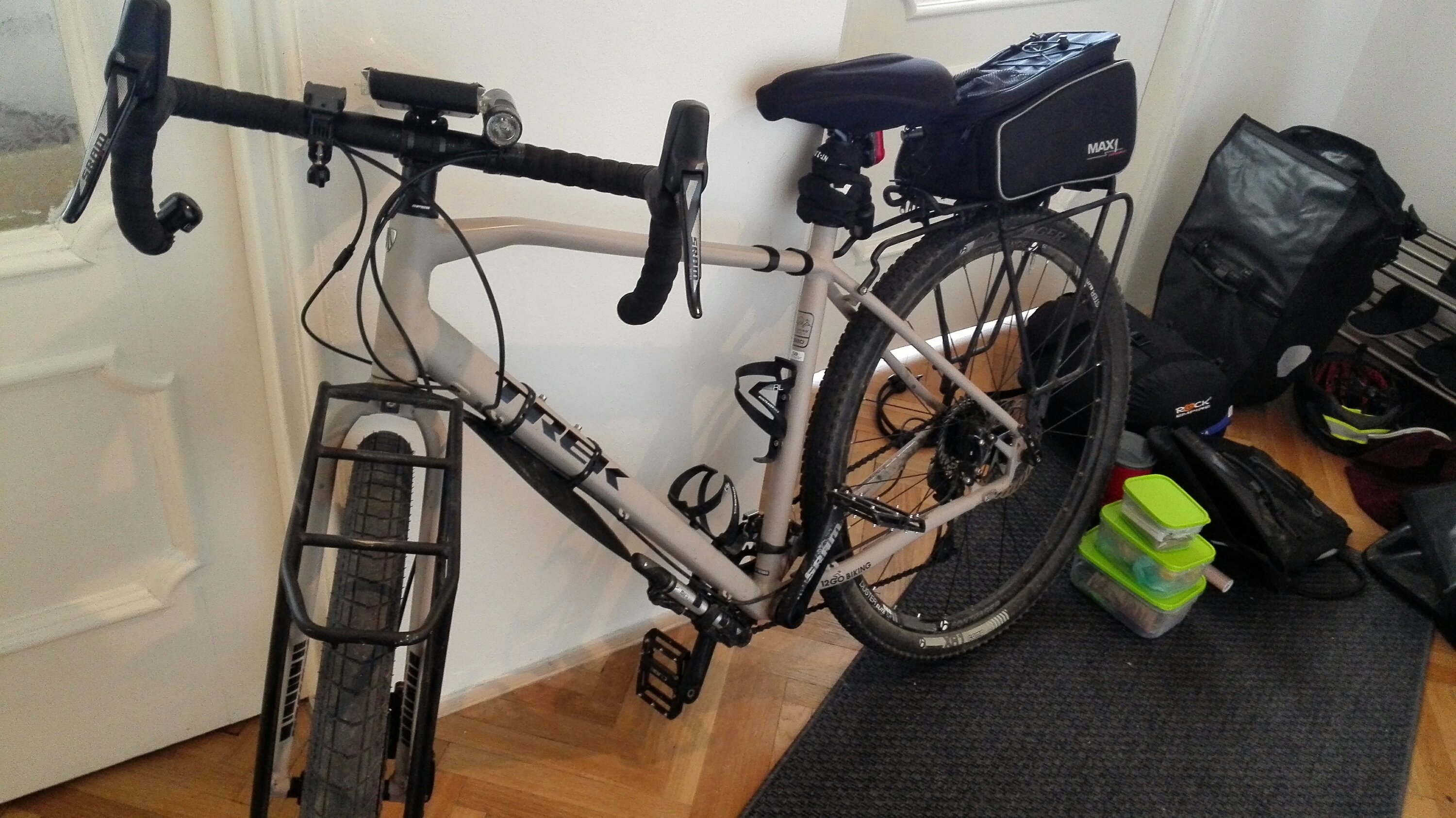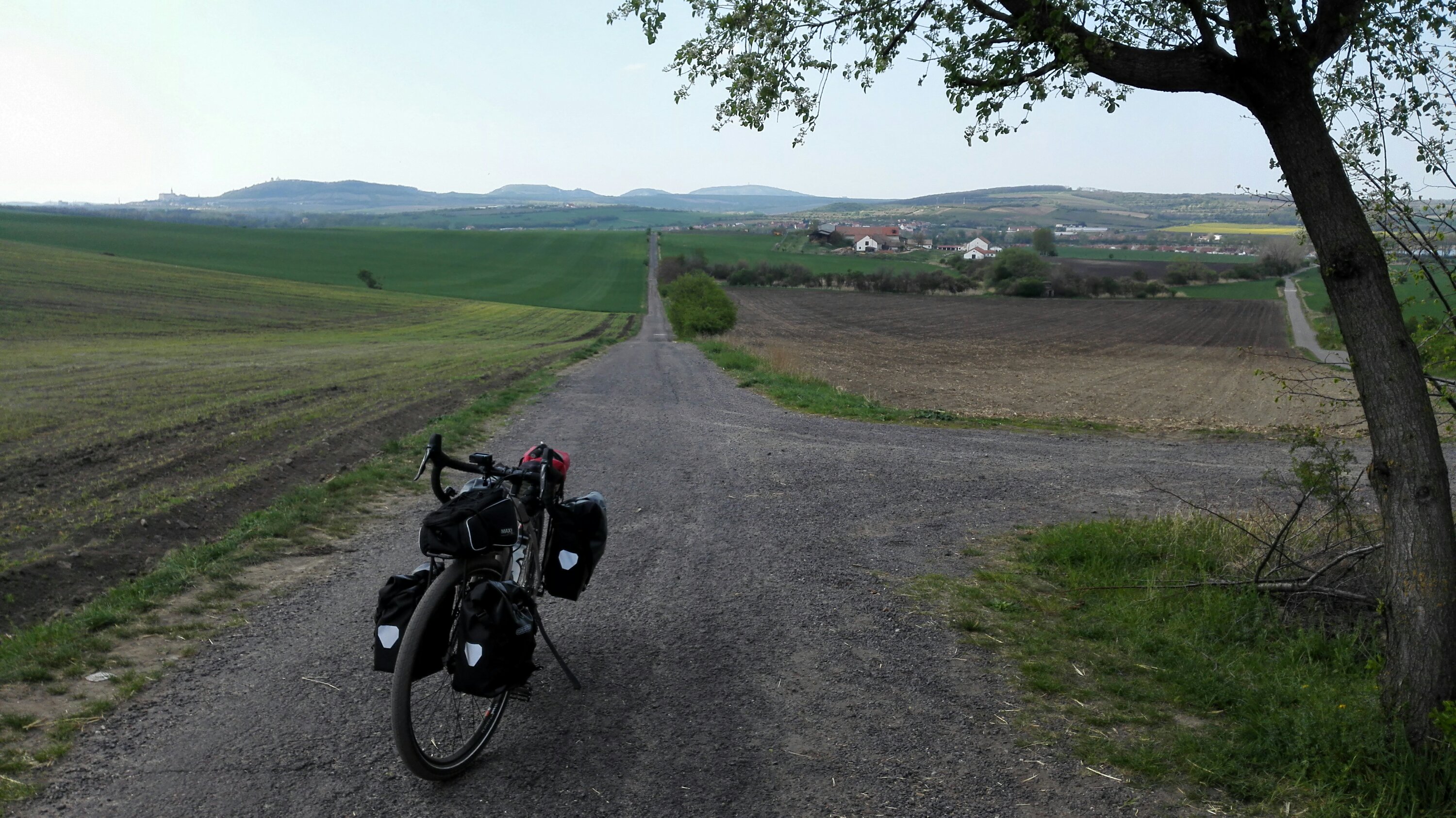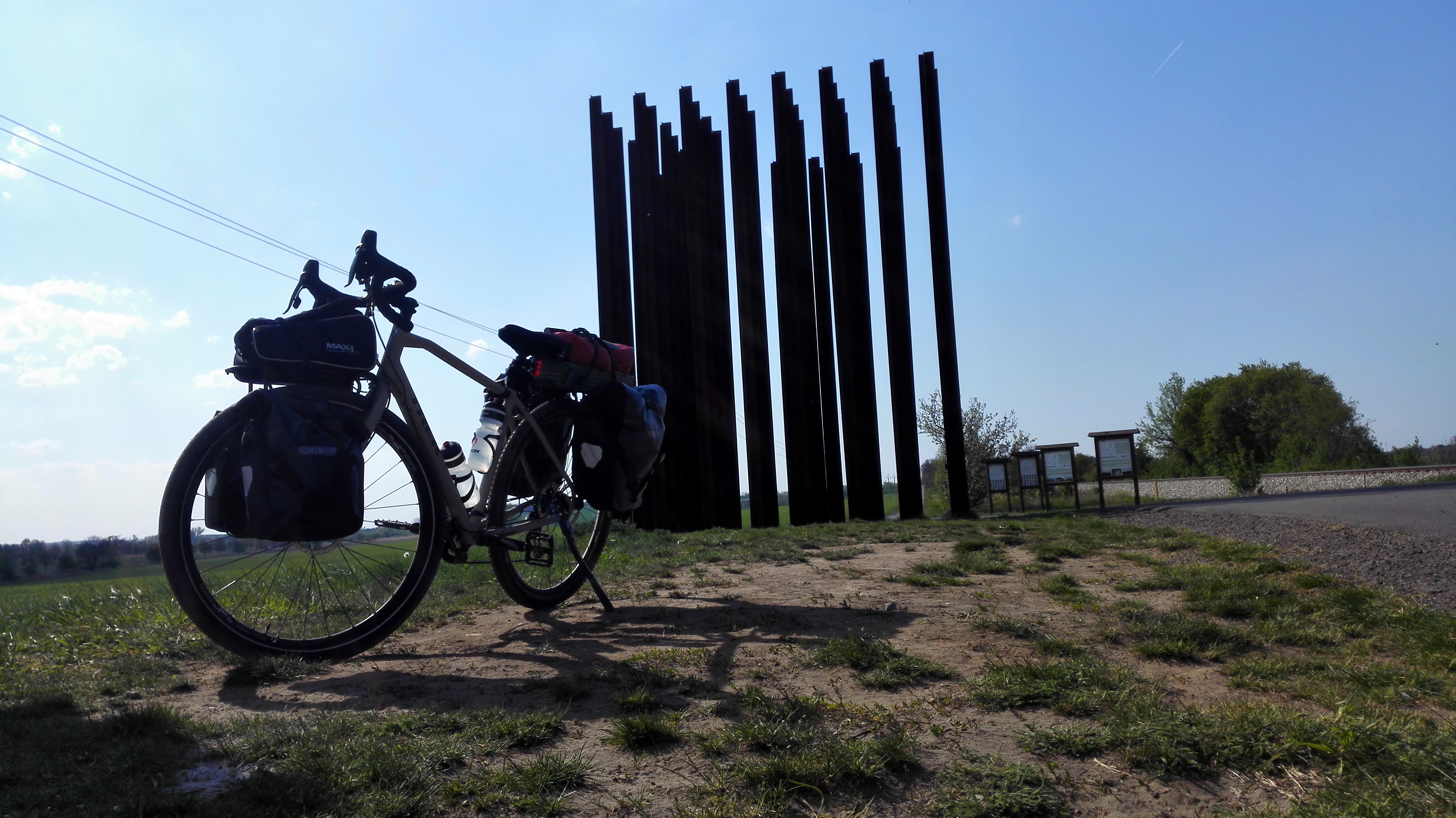I really enjoyed my time on the road, and I’m already itching to get back out there.
For sure there were some tough moments, particularly the storm in Austria, but each hill bested, each town reached, just spurred me on to the next one.
I had supposed that the climbs would be the hardest challenge, but it was the wind that slowed me more than anything. Most of the route through the countryside is wide open and exposed. Momentum was interrupted by sudden gusts that stopped me dead.
Shelter came in built-up areas, and there were some lovely jaunts through woodland and along tree-lined avenues and canals. The weather was fantastic overall.
Once the wind had subsided enough I was able to get a satisfyingly speedy rhythm on the flat sections. The conditions might not be predictable, but the efforts and rewards generally seem to even-out.
Most fun moments were definitely around the Podyjí National Park. Gliding downhill through the winding forest was pure bliss.
I wasn’t half as knackered as I thought I would be. No injuries apart from a few missing chunks of flesh. My legs burned – both inside and out – after the first day, but otherwise were happy to keep going and not complain. Overall I felt pretty good throughout.
Not to say that I was totally killing myself. I made sure to stop where I wanted, and I took-on plenty of food and refreshment. Cycling in the hot sun is thirsty work don’t ya know 😛
If you are thinking of doing the Prague-Vienna Greenways (you should!), then you will need a bicycle suitable for the task. This means at least a mountain bike with disc brakes. A standard road bike would be unable to carry much, but is also likely to let you down on some challenging sections, where there are real dangers presented by the road surface.
Tyres: The stock Trek 920 comes with mountain-bike tyres, which I think are unsuitable for a trip like this. But I had done my research and had installed a pair of Schwalbe Big Apples. These are road tyres for 29 inch mountain bike wheels. They have a flatter thread and are much wider. They can be deflated to provide extra traction and suspension. I tested them on many surface types in-and-around Prague, and I was really pleased with them.

The night before leaving I noticed that the back tyre was warped. On inspection, it looked like one of the threads had snapped, causing a deformation. So I changed it for the thinner stock Bontrager tyre, reasoning that it would still provide enough traction on all surfaces. Wrong! There was a noticeable loss of grip on gravelly surfaces – of which there was a lot. Overall I felt that I should expect more forward power without slippage. Good for mud I’m sure, but I encountered little. For touring over mixed terrain, for me the road tyres win hands-down.
At times I did consider swapping the front and back tyres, but it would have taken too much time. For the next trip I will be sporting a well-tested pair of Big Apples or something similar.
Baggage: I had put a lot of thought into this. The choice of panniers was a no-brainer. I needed fully waterproof and only Ortliebs fit the bill. That’s why they are such a popular choice for touring.
But as sturdy as they are, I missed simple things like side-pockets. Opening and closing the bags can be a bit fidgety, and there just doesn’t seem to be that much room inside. I’m going to reconsider my options here.
On the front, one side was reserved for stove and food, the other for laptop, wires, raincoat and warm hoodie. On the back one is for the sleeping bag. It’s light but bulky and necessary.
The last bag was for clothes, bike things (extra tube, repair kit, chain oil, multi-tool), and toothbrush. I packed as light as possible and each bag could be lifted with little finger. Strapped to the back is a one-man tent that weights only a kilo, and a foam mat that weighs next-to-nothing. On the front, a ‘bumbag’ in which to keep light incidentals.
But when I had them all loaded on the bike together the weight became appreciable. I’ll be honest, at first I was having doubts that I could manage it, and would have to ditch some cargo. I wasn’t worried about the the extra effort needed to push it, but more how to maintain control.
Even though the front panniers are kept as low as possible, it still required some heavy-handed steering. Sometimes a lateral oscillation would develop on the front wheel, and I had worried that this could damage the axle or the forks. Even after careful re-balancing of weight across the bike, the problem would still appear, and this wouldn’t be good for downhills. So I was careful for the first few days, but eventually I had subconsciously learned the quirks, including how to dampen the oscillation, and I was feeling in full control.

I soon learned that, when going uphill, I could slightly leverage the weight of the front baggage by standing and leaning forward as far as possible. It’s all about centre of gravity, for which a re-adjusted sense soon develops.
A couple of times, as I drifted through a seemingly deserted small village, blazing midday sun, dusty bike and cargo bouncing over every bump and pothole, it felt almost wild-west, with shuffling curtains wanting to know who’s this new stranger in town. 🙂
When I bumped into Mike – the tourer also headed to Budapest – I saw that he was carrying a lot more gear. He almost literally did have the kitchen sink – in the form of a huge water tank – strapped to the front of his bike. It didn’t seem to bother him, water sloshing around. And he was only spending a week on the road. Maybe my setup isn’t so bad after all.
Apart from the weight, which just takes time to get used to, there is the question of aerodynamics. There is nothing you can do about a headwind beating into you, but cross-winds are a real danger, the bags acting like sails. I was suddenly knocked sideways a few times, but stayed on the bike. However, on a few occasions I pulled-in to let a large truck pass. At the speeds those guys go, they create their own vortices.
Also, the camber was steep and potholed on some of the unavoidable main roads. Most passing cars are respectful – there was even the odd honk and thumbs-up – but it’s best to be defensive when it comes to busy roads. Thankfully there were not too many main roads to deal with this time. It will be different down south.
By now the bike is comfortable, overall it performed perfectly. I’ve modified it, geometries have adapted, and my ass didn’t once feel sore – probably due to the combo of a gel seat cover and padded cycling shirts, which unfortunately make you look like you just shit yourself 😛
The road-shifter gears are great, and it was nice to have the hoods and dropped handlebars. The disc brakes were well tested. I would say that disc brakes are essential for some of the downhills, otherwise you’ll be burning serious rubber. Some downhill sections are on a very poor surface, so you need to have your wits about you.
Route mapping: Once outside of Prague, and with a few exceptions, the Greenways is very well signposted at the major junctions. The signs change to blue and then green in Austria, and there are Greenways info boards in some towns. Apart from the main Greenways route I followed, there are many smaller local bike tours that are well mapped. You could spent months exploring them.
I did get lost a few times. Whenever a feeling of doubt arose, I whipped out my phone to check GPS location, and it saved me. So, a very handy thing to have!
I used a free Android app called GPXviewer, and tested this GPX file of the Greenways route, finding it to be very accurate. The app itself is battery efficient and can run simultaneously with the similarly lean and free GPSlogger.
The EuroVelo 6 route between Vienna and Budapest is almost flawlessly signposted, however there are some minor turns that are easily missed as you whoosh past the sign. So, keep your eyes open.
Also, even though much of the route from Vienna-Bratislava is newly paved, with some sections still being built, the situation in Hungary is more variable. Whereas many Hungarian main roads have a parallel cycle path – which is quite something – a good portion of these paths are poorly maintained, cracked and bumpy which demands care and will hinder speed in some sections. Other sections are heavy gravel and dirt roads through fields.
There is an official EuroVelo 6 app with GPS, and it works but with some annoyances. It could do with an update.
Next planned stage is late July from Budapest to Belgrade, maybe further along to Skopje if I find the time. I am counting the seconds!
P.S. I took more video than photos, and captured some great footage. When I have a chance I will edit them into something coherent.
